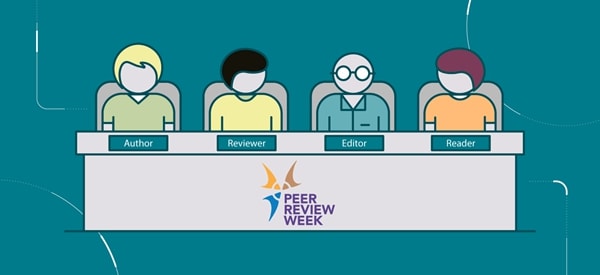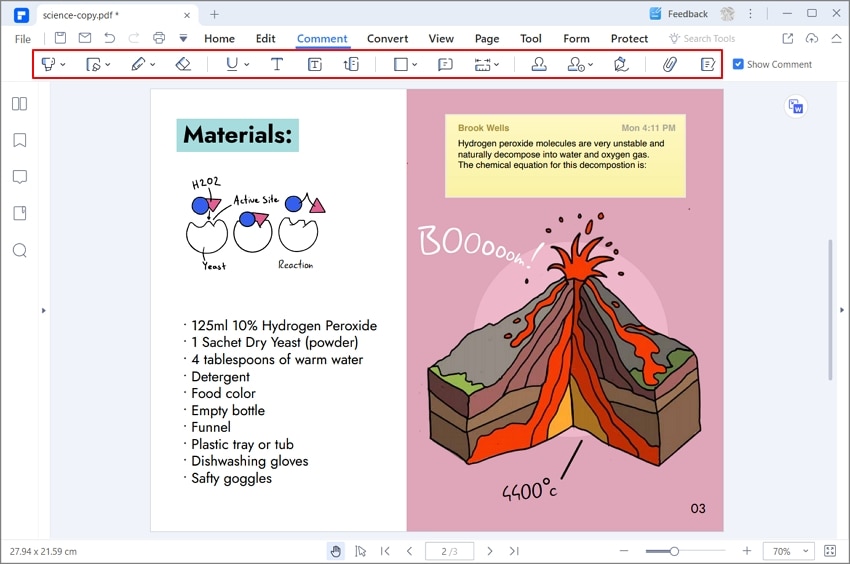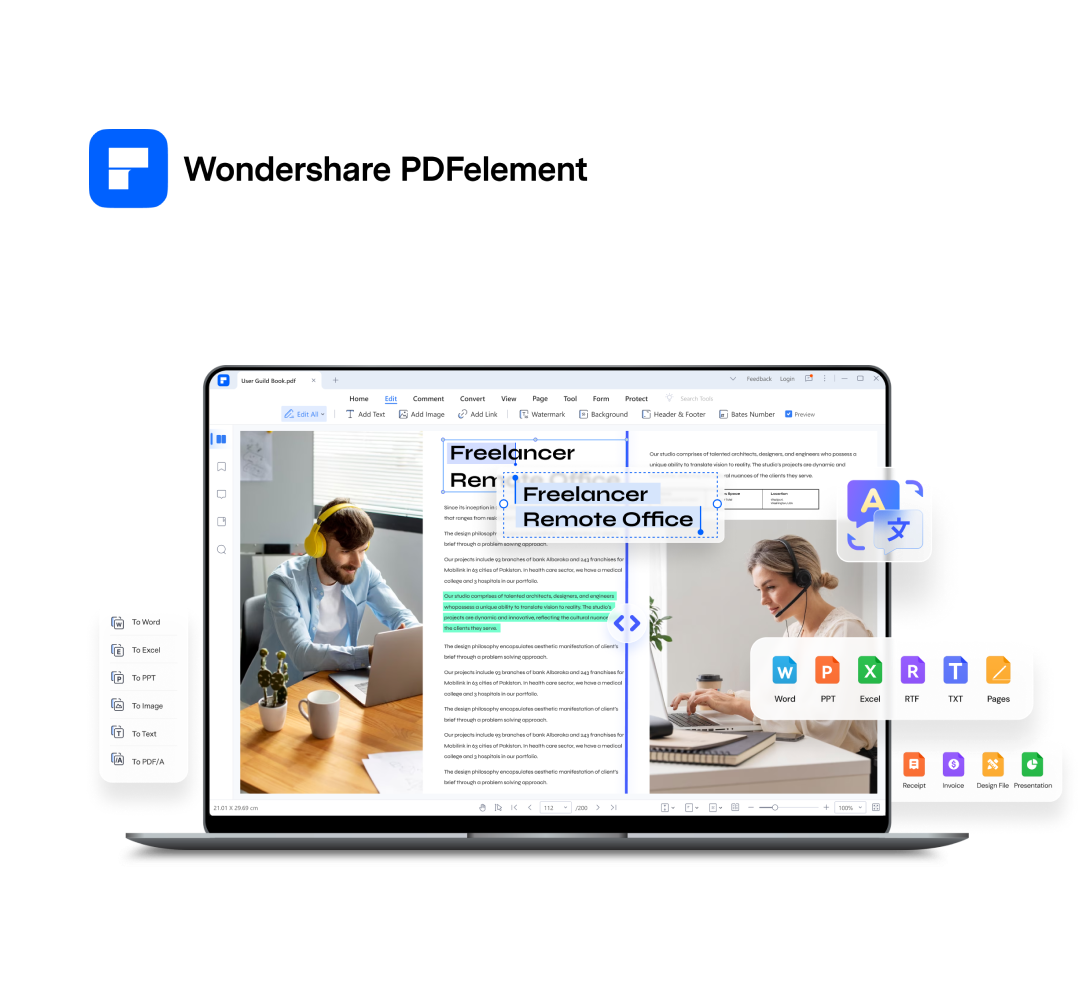The following article begins with a brief introduction to peer reviewing, and then continues to a comparison between the different standards of file formats and their respective advantages and disadvantages. This is followed up by the discussion of pdf files and the advantages of using the PDF file format with respect to peer reviewing. Lastly, the pdf editing tool, PDFelement is discussed in detail before a conclusive paragraph is given.
In this article
Part 1. What Is Peer Review
“Peer review is designed to assess the validity, quality and often the originality of articles for publication.” Wiley

Peer reviewing takes place between works created by people of comparable competencies. Not only is peer reviewing cheaper compared to standard reviewing, it is also more robust and thus, takes comparatively less time. Peer review also often motivates authors to submit work of better quality. Peer review improves the quality of respective published paper.
Part 2. Standards for the File Format in Peer Review
One of the first and foremost issues faced during peer reviewing is the selection of the file format for the respective article. More common file formats used include: DOC, DOCX, TXT, RTF and PDF. It may be argued that each file format has its own advantages and disadvantages, however, some file formats have a clear and distinct advantage when it comes to peer reviewing.
1. TXT
the .txt file format stores plain text, and is associated with a very small footprint, i.e. they occupy a very small amount of space, and thus load very quickly. Furthermore, it is also much simpler to open and access .txt files as they are supported by all of the present text editing softwares. Viruses, worms and Trojans often gain access to computers through .txt files. Though .txt files are very convenient, they lack security and are also very prone to undesired changes in formatting, hence are unsuitable for peer reviewing.
2. RTF
The RTF (Rich Text Format) file format is the successor to .txt files. With a file extension of .rtf, the .rtf file format allows for text formatting and for the insertion of images. These are also very convenient to access, and may be opened on any file system with ease. It too lacks security and formatting is prone to vary in different systems, thus proving to be inconsistent in different systems and hence being unsuitable for peer reviewing.
3. DOC and DOCX
The DOC and DOCX file formats are well associated to Microsoft Word, with the DOCX being the direct successor to the DOC file format. The DOCX file format was introduced from Microsoft 2007 onwards, and the newer format creates smaller, lighter files, with the added benefit of being easier to open and read. Lastly, it is also easier to repair a damaged .docx file compared to a .doc file.
On one side of the scale, it is much more difficult to open and easily access .doc/.docx file formats, due to their incompatibility with most open source, and free editing software’s. On the other hand, however, .docx files are highly secure, opening in a “Protected View”, allowing users to verify, and then decide whether or not to enable editing in-order to protect themselves and their respective systems-be it laptops, smartphones, or desktop computers- from malicious attacks, such as Trojans, viruses, and worms. To summarize, .doc/.docx file formats have high security and are much more consistent with their editing, as compared to most other file formats. However, viewing them is, at times inconvenient, due to the need of specialized software such as MS-Word.
4. PDF
PDF files are the trademark for the formal transfer of documents. The immense popularity of .pdf files include their security, small size, consistent formatting and OCR. PDF file formats support a wide variety of image compression file formats, and are therefore very easy to store and access (quick loading times). This improves overall file management of the hard disk itself. Moving on, PDF files can be signed by authors and password protected, thus increasing their security. However, these files cannot be edited easily, which, with respect to peer reviewing, is an advantage, as it prevents reviewers from making any changes in submitted document.
Part 3. Advantages of PDF Format in Peer Review
1. Compression
PDF file format allows for a wide variety of compression algorithms as compared to other file formats. Compression techniques give .pdf file formats the edge with respect to occupied space, and hence .pdf files take some of the lowest amounts of file space in the system, thus improving the file management by reducing storage space occupied, especially when dealing with large numbers of files.
2. Cross-platform support
Compared to its competitors such as the .docx, which is primarily supported solely by Windows and its proprietary software, the .pdf file format is support by multiple free software’s on all OS present.
3. Security
Some of the key factors leading to the security of pdf files include the presence of password based protection and the signing of documents to ensure testability. Password based protection prevents unwanted people from accessing sensitive files, and thus and a layer of protection which improves privacy and may also prevent the said files from being manipulated to contain malicious code such as spyware and viruses. PDF files are also more secure on the basis of the fact that it is such more easy to run anti-virus scans on such files, and hence it is much easier to detect harmful files as compared to other file formats.
4. Communitive
Lastly, readers can add comments to specific parts of pdf files without disclosing their identity or editing the document itself, hence improving anonymity and security.
Part 4. PDFelement for Professional Peer Review
Professional Peer reviewing requires files to be verified and free of any types of threats to the system. Furthermore, there should be an option to add comments where work is required, allowing the reviewer to highlight the mistakes made and thus allowing the author to review said mistakes later. Keeping the above requirements in mind, PDFelement not only matches the criteria, but improves on it in all aspects possible.
PDFelement is a software containing a wide variety of tools which allows one to create, edit, convert and sign PDF documents easily on either Windows, or Mac.
PDFelement has a very clean and intuitive, easy to use interface which allows users to easily discern and access the tools they may require. Some of the present tools include OCR (for reading text from images), signing of documents, annotations, and password protection. Tools that are helpful especially in peer reviewing include the ability to review and comment, and spellchecking. With respect to commenting, users can use marks and give comments to the parts of files that need to be edited and require evaluation.

Conclusion
Over the ages, many different file formats have been introduced, each catering to different needs and requirements. Over time, many file formats have become redundant, and have thus been replaced by improved versions. When it comes to the formal interchange of soft copies, there is no doubt that the PDF file format performs better than any of the present file format due to the presence of a strong layer of privacy and support for anti-virus programs.
When it comes to peer reviewing, the presence of anonymous commenting and highlighting without the editing of the file itself are an added bonus, and it would not be an overstatement to say that to use pdf file formats for peer reviewing is indeed akin to killing two birds with one stone.
 100% Seguro | Sin anuncios |
100% Seguro | Sin anuncios |
